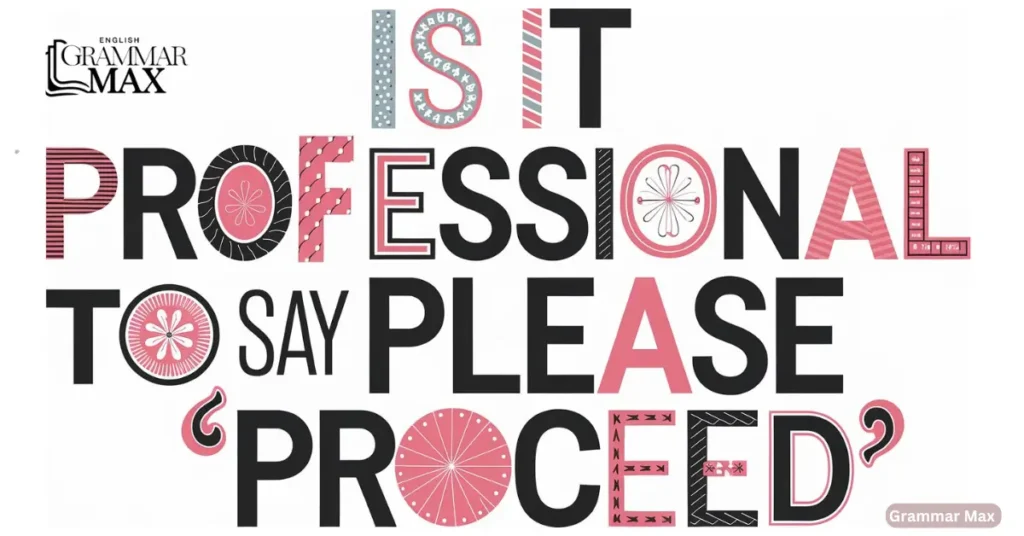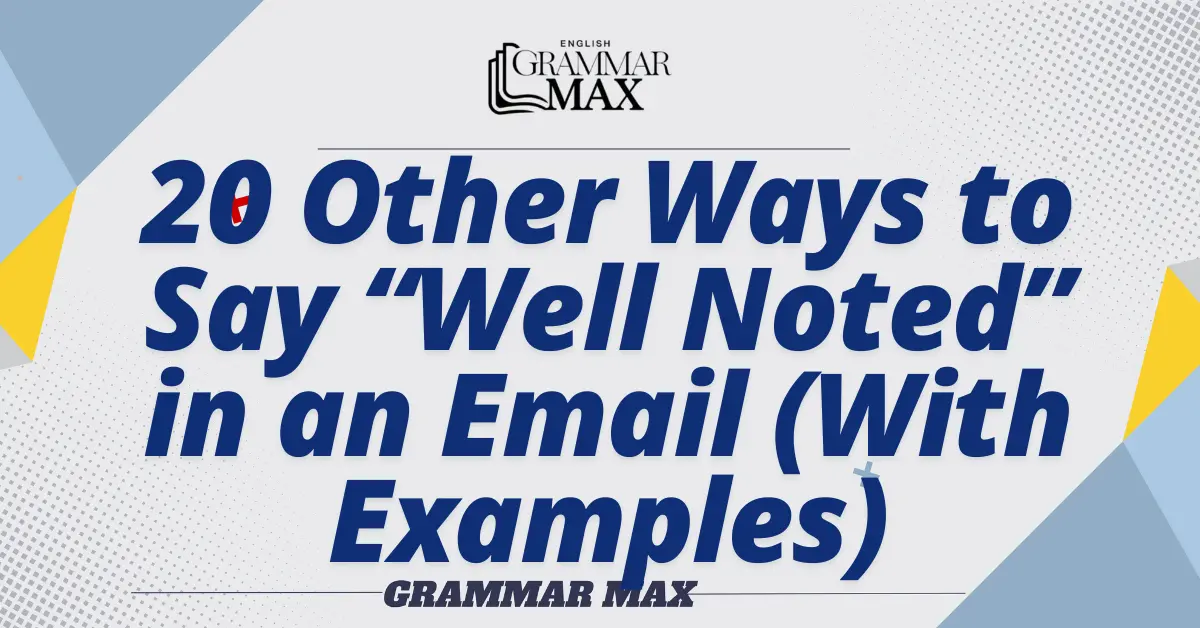When communicating in a professional email, it’s essential to use polite phrases to convey respect and professionalism. The phrase “please proceed” is common, but there are numerous polite ways to say this, ensuring that your emails sound thoughtful, considerate, and clear. Whether you need someone to move forward with a task or take action, these alternatives allow you to express yourself in a way that maintains a positive tone. Each phrase can be tailored to different levels of urgency and formality, making them useful in various contexts.
Choosing the right words can make a significant difference in how your message is received. A well worded request ensures that instructions are clear while maintaining professional communication standards. Below are 15 ways to say “please proceed” politely in emails, each with examples to help you decide when and how to use them effectively.
Alternative Ways to Say “Please Proceed”

You can use these ways instead to say “Please Proceed”:
- Please advise to proceed
- Feel free to proceed
- You may go ahead
- Proceed at your convenience
- Go ahead when you’re ready
- Please continue as planned
- Proceed whenever you’re ready
- Please move forward with the next steps
- You can move forward now
- Go ahead and proceed
- You have the go-ahead to proceed
- Proceed with the next phase
- Move forward when you’re ready
- Proceed whenever suitable
- Feel free to move forward at your discretion
Please advise to proceed
This phrase is used when you need confirmation before taking the next step. It’s a polite way of ensuring that the other person is ready for you to continue. By asking them to advise, you show respect for their input and avoid moving forward prematurely.
It’s commonly used in formal communication to ensure mutual agreement. Best for scenarios where clarification is required before advancing. It maintains a professional tone while being considerate of the recipient’s preferences.
Best use:
When you need to ensure the other party is ready for you to continue.
Example Email:
“Hi Sarah,
Could you please advise to proceed with the project update? I want to make sure everything is aligned before moving forward. Thank you!”
Feel free to proceed
This phrase gives the recipient the autonomy to move forward without pressure. It’s a respectful and polite phrase that allows the other person to proceed at their own pace. It conveys flexibility and shows that you trust their judgment.
It’s perfect for situations where there is no urgency but action is still required. Feel free suggests openness, making the recipient feel comfortable taking the next step. Ideal for non-urgent tasks.
Best use:
When you want to give the recipient freedom to move forward at their own pace.
Example Email:
“Hello John,
Feel free to proceed with the marketing campaign once you’re ready. Let me know if you need anything else from me beforehand.”
You may go ahead
This phrase offers a direct yet polite way to grant permission to continue. It’s a common and professional alternative to “please proceed,” making it useful in both formal and semi-formal contexts.
It also reassures the recipient that they have your approval to move forward. Use this when the recipient has been waiting for your confirmation. You may go ahead is short, effective, and keeps communication flowing smoothly.
Best use:
Ideal for situations where the recipient has been waiting for your approval to continue.
Proceed at your convenience
This phrase emphasizes that the task can be done whenever the recipient is ready, adding a courteous touch by allowing flexibility.
Best use:
When there’s no rush, and you want the recipient to proceed at their own pace.
Example Email:
“Dear Mark,
Once the documents are reviewed, proceed at your convenience with the next steps. There’s no strict deadline, so feel free to take your time.”
Go ahead when you’re ready
This phrase is another respectful way to give the recipient control over when they can proceed. It’s useful in situations where you don’t want to rush the other person but still need to ensure progress.
The phrase implies that the task should be done, but on their terms. It’s a considerate and polite way to acknowledge their schedule while also maintaining a professional tone. Go ahead when you’re ready strikes the right balance between urgency and flexibility.
Best use:
When you want to convey patience and flexibility.
Example Email:
“Hi Emma,
There’s no rush on this task, so go ahead when you’re ready. Let me know if you need any additional resources.”
Please continue as planned
This is a polite instruction to maintain momentum in a project without making any changes. It ensures that the recipient follows the agreed course of action, reinforcing the idea that no further adjustments are necessary. Please continue as planned is ideal for structured projects where staying on track is essential. It’s a professional and respectful phrase that reassures the recipient that they’re on the right path. This ensures consistency in task
Best use:
When you want to confirm that the recipient should follow through with the initial plan.
Proceed whenever you’re ready
This phrase shows flexibility and respect for the recipient’s timeline while giving them the authority to move forward when they’re comfortable.
Best use:
When the timeline is flexible, and you trust the recipient to proceed when it suits them.
Example Email:
“Hi Sandra,
I’ve attached the necessary files. Proceed whenever you’re ready, and don’t hesitate to reach out if you have any questions.”
Please move forward with the next steps
This phrase provides clear and respectful guidance to continue with the project’s subsequent tasks. It keeps the focus on moving ahead while ensuring that the recipient understands what’s required next.
Please move forward with the next steps works well in professional settings where following a structured process is important. It’s a polite way to maintain momentum while ensuring that the project continues as expected. This keeps communication smooth and on track.
Best use:
When there’s a structured process, and the recipient needs to move on to the next stage.
Example Email:
“Dear Rachel,
The preliminary work looks fantastic. Please move forward with the next steps and keep me posted on your progress.”
Is it Professional to Say “Please Proceed”?

Yes, it is professional to say “Please Proceed” in business communication. This phrase is direct, clear, and polite, making it suitable for various professional contexts. It gives the recipient explicit permission to move forward, while maintaining a tone of respect and courtesy. By using “please,” it softens the request, making it more polite and considerate. Whether in emails, meetings, or formal instructions, “Please Proceed” effectively communicates that action is required without sounding abrupt or demanding. It’s a phrase that balances professionalism and politeness in workplace.
Frequently Asked Question
What does “please proceed with” mean?
“Please proceed with” is a courteous way to instruct someone to continue or carry out a specific action or task.
How do you say “please proceed” in an email?
In an email, you might say, “Please proceed with the necessary steps,” to communicate your request clearly.
What does “please proceed with the order” mean?
“Please proceed with the order” indicates that you are authorizing the continuation of processing or fulfilling a purchase.
How do you use “please proceed accordingly” in a sentence?
You can say, “Based on our agreement, please proceed accordingly with the implementation plan,” to guide someone on how to act.
Conclusion
Providing alternatives to “please proceed” in professional email communication enhances your message by making it more polite and respectful. These phrases help maintain a positive tone while ensuring that your recipient knows exactly what is expected. Whether you need to emphasize flexibility or urgency, there’s a polite alternative for every situation. By using these phrases, you show consideration for your recipient’s time and effort, making your communication more effective.
Taking the time to choose the right polite phrases not only builds better relationships but also fosters a more collaborative and positive working environment.

William Henry is a writer for Grammar Max, a blog that focuses on synonyms and phrases. He loves exploring the quirks of the English language and enjoys helping readers improve their vocabulary. William’s articles are easy to read, fun, and full of useful tips for anyone looking to better understand and use English. Whether you’re a student, a professional, or just someone interested in language, William’s writing on Grammar Max makes learning about words and their meanings simple and enjoyable.





